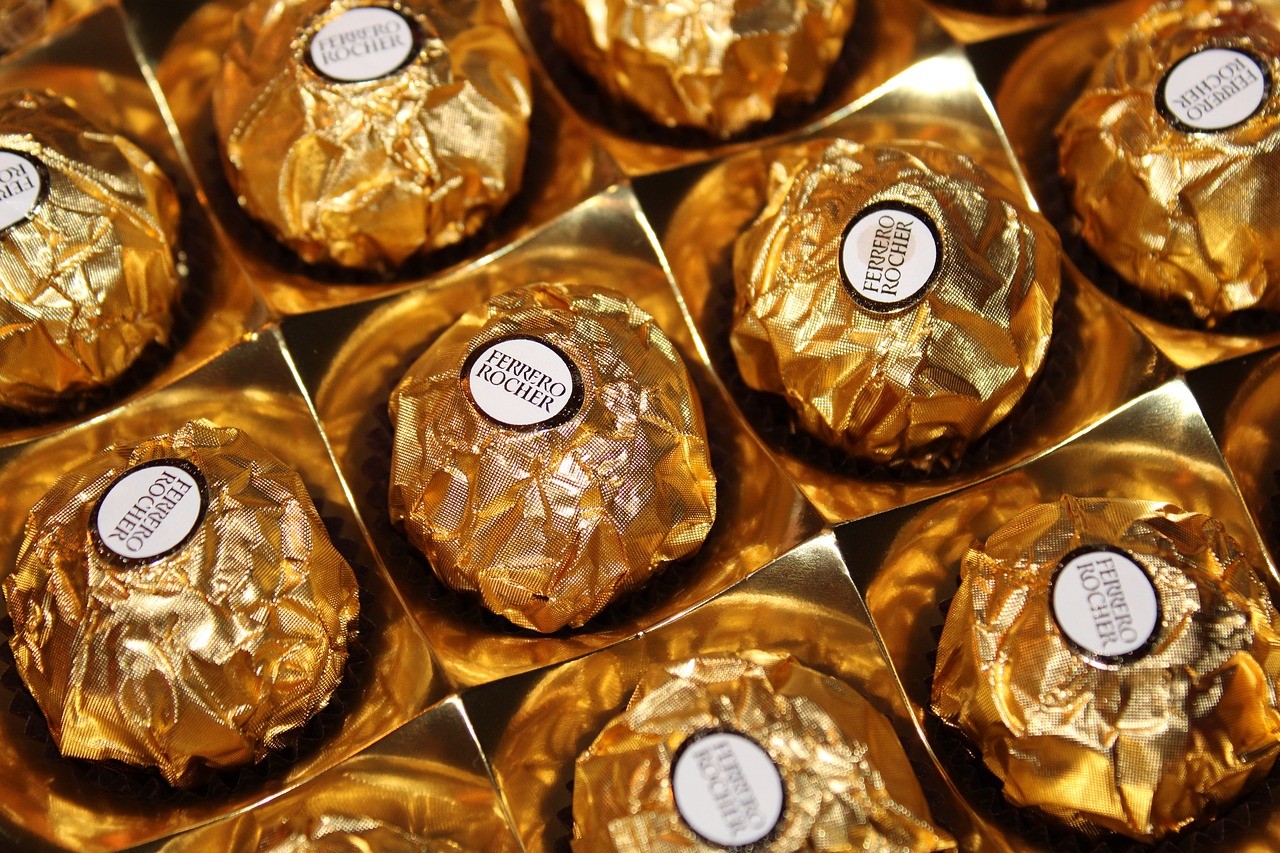The Ferrero case: when international trademark laws outreach local laws
The Ferrero case: when international trademark laws outreach local laws
a cura di Caterina Da Molin
Introduction
In 1985, Paris Convention for the Protection of Industrial Property (CUP) introduced the new well-known trademark category in the Chinese system. An innovative provision was article 6-bis, which regulates the new class and introduces an exception to the important principle of registration, stating that well-known trademarks can be legally protected also without a prior registration[1].
Article 6-bis [Marks: Well–Known Marks]:
“(1) The countries of the Union undertake, ex officio if their legislation so permits, or at the request of an interested party, to refuse or to cancel the registration, and to prohibit the use, of a trademark which constitutes a reproduction, an imitation, or a translation, liable to create confusion, of a mark considered by the competent authority of the country of registration or use to be well known in that country as being already the mark of a person entitled to the benefits of this Convention and used for identical or similar goods. These provisions shall also apply when the essential part of the mark constitutes a reproduction of any such well–known mark or an imitation liable to create confusion therewith.
(2) A period of at least five years from the date of registration shall be allowed for requesting the cancellation of such a mark. The countries of the Union may provide for a period within which the prohibition of use must be requested.
(3) No time limit shall be fixed for requesting the cancellation or the prohibition of the use of marks registered or used in bad faith”[2].
The first case solved under this exception was the one concerning the foreign trademark Pizza Hut, which was recognize as well-known after its opposition to the registration of an identical trademark. Subsequently, other case solutions were based on this discipline, such as in Tongrentang case.
We can find another reference to this matter in article 5, 2°co. of the Unfair Competition Law of the People’s Republic of China (1993), which introduces some limitations for operators in relation to well-known trademarks.
Article 5, 2°co.:“An operator may not adopt the following unfair means to carry to transactions in the market and cause damage to competitors: (2) using, without authorization, the name, packaging or decoration peculiar to well-known goods or using a name, packaging or decoration similar to that of well-known goods, so that his goods are confused with the well-known goods of another person, causing buyers to mistake them for the well-known goods of the other person”[3]
The first trademark’s ad hoc provision is the 1996 SAIC Regulation that translates the Action Plan on the Effective Protection and Enforcement of Intellectual Property Rights, a Chinese-USA agreement on IPR[4].
In 2001, with the second Trademark Law reform, two important provisions occurred. First of all, article 13 establishes that “a holder of a trademark that is well known by the relevant public may […] request for well-known trademark protection in accordance with this Law. Where the trademark of an identical or similar kind of goods is a reproduction, imitation, or translation of another person’s well-known trademark not registered in China and is liable to cause public confusion, no application for its registration may be granted and its use shall be prohibited. Where the trademark of a different or dissimilar kind of goods is a reproduction, imitation, or translation of another person’s well-known trademark not registered in China and it misleads the public so that the interests of the owner of the registered well -known trademark are likely to be impaired, no application for its registration may be granted and its use shall be prohibited”. Secondly, article 14 makes a list of factors that shall be taken into consideration in the recognition of a well-known trademark:
“(1)The recognition degree of the trademark among the relevant public;
(2)The duration in which the trademark has been in use;
(3)The duration, extent and geographical scope of all publicity operations carried out for the trademark;
(4)The records of protection of a well-known trademark provided for the trademark and
(5)Other factors making the trademark well-known”[5].
One of the most significant Intellectual Property Right cases, is the one that involves the Italian Ferrero S.p.A and the Sino Belgian joint venture Mengtesha Food Co. Ltd (known by the western name Montresor). Indeed, many national and international papers have dealt with this topic because of its global relevance[6].
First of all, it covers many important themes such as the territory for the determination of well-known products, the determination of the unique trade dress and the consumer confusion[7]; secondly, it led to a sentence of the higher Chinese court, the Supreme People’s Court.
In order to analyse the case, we can follow the Supreme Court’s final judgment, rendered on 24th of March, 2008[8].
Facts
On one side, we have Ferrero S.p.A. The first important date is 1982, when Ferrero Rocher, a chocolate and hazelnut confectionery, was placed on the Chinese market. In particular, from 1984 to 1993, the product was sold in China through China Grains-Oil & Food Import-Export Company with the name 金沙 Jin Sha, used previously in Taiwan and Hong Kong and registered only in these two cities respectively in 1990 and 1993.
The main characteristics of the chocolate packaging are:
- a golden wrapper of the ball-shaped chocolate;
- an oval trade dress with golden edge, on which the Ferrero Rocher mark is printed;
- a dark brown trade dress;
- different shapes of plastic transparent package;
- an oval pattern with golden edge on the plastic transparent package, within which there is the product pattern and mark, with golden ribbon stretching therefrom.
In 1984, this type of packaging was registered as a three-dimensional trademark at the World Intellectual Property Organization and, in October 1986, Ferrero S.p.A. registered the trademark Ferrero Rocher and the oval shaped with golden border at the Trademark Office of the State Administration for Industry and Commerce (国家工商行政管理局商标局).
Since 1993, Ferrero S.p.A had started distributing these products, without changing the packaging, directly through its general dealer in China, concentrating in the areas of Guangdong, Shanghai and Beijing and spreading them more and more through newspapers, magazines and advertising posters, to the point that, in 2000, Ferrero Rocher was confirmed as one of the important national marks from the SAIC.
Opposed to the Italian company, we have Mengtesha Food Co. Ltd, a company born in 1991 as a joint venture between Zhangjiang Milk Products First Factory and the Belgian company Fitradeal S.a. Company Limited, with the purpose of producing and selling chocolate sweets.
Since 1990, Zhangjiang Milk Products First Factory had started to produce chocolates with the registered trademark Jin Sha, that was used together with the same trade dress of Ferrero Rocher. At the same time, this company asked for the registration of the name in combination with the packaging. However, China Trademark Office, upholding Ferrero’s opposition, rejected the request because the trade dress was too similar to the Ferrero Rocher one, causing consumer confusion. Nevertheless, First Factory continued using this packaging and, between 1991 and 2001, it won many national prizes.
In 2002, First Factory transferred his mark Jin Sha to Montresor, that started to produce and sell chocolates with the name Jin Sha Tresor Dore and with a similar Ferrero Rocher’s packaging. In particular, Montresor sold these chocolates in Tianjin through Zhengyuan Distribution Company.
In July 2003, Montresor registered in China Jin Sha Tresor Dore mark and Ferrero S.p.A. sued Montresor and Zhengyuan Distribution Co. before Tianjin No.2 Intermediate People’s Court.
First trial: Tianjin No.2 Intermediate People’s Court
Due to the fact that Ferrero S.p.A. didn’t register the trademark Jin Sha, the only way to protect its rights was to allege that Montresor actions constitute unfair competition, according to the aforementioned art.5, co.2.
The main issues decided by the Court were:
- is Ferrero Rocher a well-known product in China?
- Are the Ferrero Rocher’s packaging and design specific or generic?
- Do the packaging used by Montresor constitute unfair competition?[9]
The court affirmed that, in the last years, Ferrero Rocher had become a well-known product in China. However, his packaging was generic, so it could not be protected under the Unfair Competition Law of the People’s Republic of China. Otherwise, the design had been used before his entrance in China and it had specific characteristics.
Then, the Court discussed about the possibility for Jin Sha’s design to ingenerate confusion through costumers. The judge underlined three main points:
- Jin Sha had started to be produced since 1990, instead Ferrero Rocher since 1993;
- Since the ninetines, Jin Sha had a higher market share than Ferrero Rocher;
in 2004 the prize “Chinese famous products” was recognized to Jin Sha.
According to these elements, the first-instance Court assumed that similar design cannot generate confusion through consumers, article 5 of the Unfair Competition Law could not be applied and so, on 7th of February 2005, Ferrero’s application was rejected.
Appellate trial: Higher People’s Court of Tianjin
Due to this decision, Ferrero S.p.A. decided to appeal before the Higher People’s Court of Tianjin claiming that the intermediate court had not considered the international relevance of Ferrero Rocher outside China and the specificity of its trade dress. Moreover, Ferrero S.p.A. claimed that Montresor had violated important principles, such as honesty and trust, registering Jin Sha trademark.
The Court agreed to consider both the domestic and foreign markets to determine the notoriety of the product, demonstrating that Ferrero Rocher was an international well-known product since 80’.
Furthermore, the Court affirmed that Ferrero Rocher’s packaging and design express a particular meaning and distinctive. Instead, Montresor could not demonstrate Jin Sha design and package’s paternity, considering also that it started only after Ferrero to use them.
On 9th January 2006, the Higher People’s Court of Tianjin, on the basis of article 1, 2, 5, 2° co. of the Unfair Competition Law and article 10, 2° and 3° co. of the Paris Convention, sentenced Montresor to immediately stop using Ferrero’s packaging and design. The court, then, condemned the company to stop selling Jin Sha Tresor Dore and to pay a compensation of 700.000 Yuan RMB to Ferrero S.p.A for economic damage. At the same time the Court rejected the other appellant’s requests, such as the instance of public apology coming from Montresor.
Retrial: Supreme People’s Court of the P.R. China
Then, Montresor decided to appellate the judgment before the Supreme People’s Court of the P.R. China asking for the elimination of the whole sentence. Appellation is possible under article 179 of the Chinese Procedure Law for a wrong application of the law, as in this case a wrong application of the Paris Convention. Montresor complains about a wrong evaluation of Ferrero’s notoriety and the prohibition to use the specific trade dress also for products that are different from the one mentioned by Ferrero S.p.A.
On 26th March 2008, the Supreme People’s Court of the P.R. China judged on the three main points of the case. About the first point, the Supreme Court’s judgment was in contrast with the Higher Court’s one, because it affirmed that well-known goods are the one that are notorious in the national market and, so, in the Chinese dimension. However, about the second point, the Supreme Court declared that, taking in consideration the entry into the Chinese market, sales records and circumstances, including advertising and promotion, Ferrero Rocher was a well-known product in China.
The last point is about the consumer confusion. The court declared that Ferrero S.p.A could not monopolize aluminium foil, plastic packs and other general items, but the packaging and design used for Ferrero Rocher chocolate were characterized by a unique combination of elements, such as colours, letters, forms etc. that make the product recognizable by consumers.
In this way, the judgment of the second instance was partly upheld. Montresor had to compensate Ferrero for its economic damages with 500,000 Yuan RMB, in 15 days from the date of this judgment[10].
Ferrari case: similar situation, different solution
Similar characteristics but different ending are identifiable in the case “Ferrari S.p.A vs Jiajian Sport Merchandise Company Ltd.”. In 1996, Ferrari S.p.A opposed to the JiaJian’s trademark registration because it was too similar to its prancing horse in “Ferrari and Prancing Horse Design” combination trademark already registered in China. However, China Trademark Office rejected its request because the prancing horse was not registered alone. Ferrari appealed before the Trademark Review and Adjudication Board (TRAB), but also in this case his request was rejected. Ferrari, then, brought the case before the Beijing First Intermediate People’s Court, in which the company affirmed that, due to the fact that his “Ferrari & Prancing Horse Design” trademark was registered, the prancing horse design mark should be a well-known mark. In order to convince the court, Ferrari declared that his trademark was internationally known, especially in China. The Intermediate Court rejected Ferrari’s instance, as well, mainly because Ferrari demonstrated only that its registered “Ferrari & Prancing Horse” combination was well-know before JiaJian’s registration, but this was not sufficient to prove that the only prancing horse diffusion. In this situation, the intermediate Court, following the Supreme Court’s thought in Ferrero case, decided to consider only the national dimension in order to decide if the trademark was well-known. Obviously, the Court’s decision brought some reservations[11].
Reforms on the protection of well-known trademarks
Nowadays, unfair competition cases are more and more common. This is why it is necessary and important to develop and improve protection laws about well-known products.
In particular, Ferrero case is really important because it has led to a better knowledge on this matter and also to many law reforms.
In this intellectual property right case, courts are the protagonist. However, the Supreme Court has tried to reduce their role, mainly throughout the emanation of two interpretations. First of all, only some specific Intermediate Courts can decide first instance cases about well-known trademark, for example Beijing, Shanghai, Tianjin, Chongqing. Secondly, Article 2 provides only three cases in which courts can decide about well-known trademarks. There are other limitations, in addition to the new SAIC regulation[12].
A new SAIC Regulation about well-known trademarks has been emanated in 2014. We can find the first reform in the article 13 Trademark Law: the owner of a violated trademark known by costumers, can ask for the protection given to well-known marks. In the Article 14 is specified that the well-known declaration can be used only inside the process of its birth. Nothing has changed in the different requirements for a mark to be well-known, except from the SAIC Regulation that has added specific temporary terms. Another important reform is the prohibition for commercial producers to write “China Well-known Trademark” in the product[13].
In the Ferrero case, Courts express their opinion about the possibility of consumer confusion between two similar products. Recently, a new probable violation of well-known trademark has emerged, the shangbiao danhua. It refers to the dilution of the distinctiveness of a well-known trademark for some specific goods, caused by a non-authorized use of the trademark itself. The recent Interpretation of the Supreme People’s Court on Several Issues Concerning the Application of Law to the Trial of Cases of Civil Disputes over the Protection of Well-Known Trademarks, provides formal recognition to this concept. The Interpretation also provides the correct method for assessing the dilution and provides clarification of the earlier practice of the China Trademark Office (CTMO) and the TRAB[14].
This practice, in addition to the reduction of distinctiveness and uniqueness of famous trademarks, leads to different bad consequences such as a weaker connection between well-known trademarks and specific products, a damage in the quality assurance features and a devaluation in the commercial value of well-known trademarks. Moreover, it damages also consumer’s interests[15].
Chinese versions of western marks
A problem for foreign products in Chinese market is the low English language literacy in China. The knowledge of English is not so common in China, normally white-collar individuals are those who speak English fluently in order to get ahead. It is more important the packaging, the shape, the colour and other physical characteristics of the products than the English trademark, because they have a more significant impact on customers. This can be seen also in the Ferrero case because, even if Montresor use a very phonetically different trademark such as Tresor Dore, Chinese costumers were less likely to see the difference due to the lack of English literacy.
For this reason, foreign companies decide to translate or to transliterate their trademark into Chinese language[16].
But there is another problem: Chinese language is not composed of letters, but of 40 syllables used to represent approximately 10000 characters. This leads mainly to two difficulties: a phonetic transliteration of a foreign trademark and the representation of a particular sound in Chinese are mostly impossible. Moreover, some marks that sound similar for westerns, for Chinese people are not. For example, the Chinese’s name for Ikea is transliterated in “Yi Jia” that means “a proper home”. One of its major competitors instead has adopted a Chinese name that is transliterated in “Aia Jia” that means “love home”. The important thing for western companies is to protect their trademark by registering both English and Chinese version. Many companies don’t follow this suggestion. Ferrero S.p.A. created a Chinese character version of his trademark, but without registering it. Throughout the registration, Ferrero S.p.A would have avoided an expensive and long process[17].
Conclusion
In conclusion we can see that in the Chinese System the procedure and criteria for the recognition of well-known trademarks are not so simple and in many cases they do not bring to successful outcomes.
However, using a series of devices can simplify the verification process. Some good practices can be:
- Work with a domestic trademark attorney experienced in well-known mark procedures;
- Collect clear evidence of the notoriety from a period of 3-5 years before the date of application of the disputed mark, supported with documents;
- Maintain a strong profile in the Chinese industry sector[18].
[1] Cfr. M. TIMOTEO, La difesa di marchi e brevetti in Cina, Torino, 2014, pp. 87-88.
[2] Paris Convention for the Protection of Industrial Property (as amended on September 28, 1979), https://wipolex.wipo.int/en/text/287556.
[3] For an English translation of the Unfair Competition Law of the People’s Republic of China see www.cecc.gov.
[4] Cfr. M. TIMOTEO, La difesa di marchi e brevetti in Cina, pp. 91-92.
[5] For an English translation of Trademark Law of the People’s Republic of China see https://www.wipo.int/edocs/lexdocs/laws/en/cn/cn195en.pdf.
[6] Cfr. “La Ferrero vince la causa in Cina” 7th April 2008 available at https://www.corriere.it/economia/08_aprile_07/concorrenza_sleale_ferrero_rocher_51081eae-0483-11dd-a0b8-00144f486ba6.shtml?refresh_ce-cp; “Chinese chocolate copycats no longer spoiling Ferrero Rocher after lawsuit victory” 12th April 2008 available at https://www.dailymail.co.uk/news/article-559261/Chinese-chocolate-copycats-longer-spoiling-Ferrero-Rocher-lawsuit-victory.html.
[7] Cfr. WAN HUI DA, Judicial interpretation of the trademark law of China, 2017.
[8] Sentenza Ferrero v. Mengtesha (Zhangjiagang) Food Co., Ltd e Zhengyuan Distribution Co., Ltd., May 24th, 2008, available at www.leggicinesi.it/giurisprudenza/Sentenza_Ferrero.pdf.
[9] Cfr. YUASA AND HARA, intellectual property news, vol.26, January 2009, p. 12 ss., available at https://www.yuasa-hara.co.jp/english/wp-content/uploads/sites/2/2009/09/ipnews026.pdf?fbclid=IwAR2HNf3yVMkY0iHYrbfTOpVSklVbJ7NfGE4RZv1cNEz6BPbdqa_WRgtnpfM.
[10] Cfr. YUASA AND HARA, intellectual property news, vol.26, January 2009.
[11] JING LUO, SHUBHA GHOSH, Protection and Enforcement of Well-Known MarkRights in China: History, Theory and Future, Northwestern Journal of Technology and Intellectual Property, 2009, Vol. 7 Issue 2, pp. 141-143, available at https://scholarlycommons.law.northwestern.edu/cgi/viewcontent.cgi?article=1082&context=njtip.
[12] Cfr. M. TIMOTEO, La difesa di marchi e brevetti in Cina, pp.108-109.
[13] Cfr. M. TIMOTEO, La difesa di marchi e brevetti in Cina.
[14] Cfr. SOPHIE ZHAO, GEORGE CHAN, Trademark dilution in China, available at https://www.i-law.com/ilaw/doc/view.htm?id=240819.
[15] LI XIAOMENG, Protection Of Famous Trademarks From Dilution In China, 2007, available at .
[16]YAN XU, The cultural and psychological characteristic of their influence on the trademark law in China, available at https://heinonline.org/HOL/Page?collection=journals&handle=hein.journals/houbtalj15&id=108&men_tab=srchresults.
[17] PAUL JONES, CHINA-Judicial and Legislative Update 2005-2006, available at https://heinonline.org/HOL/Page?collection=journals&handle=hein.journals/intjoflw4&id=98&men_tab=srchresults.
[18] Well-Known Trade Marks in China, available at https://assets.publishing.service.gov.uk/government/uploads/system/uploads/attachment_data/file/269552/British_Embassy_Beijing_-_China_Well-Known_Trademarks_Factsheet_-_Jan_2013_-_with_CBBC_logo.pdf.




